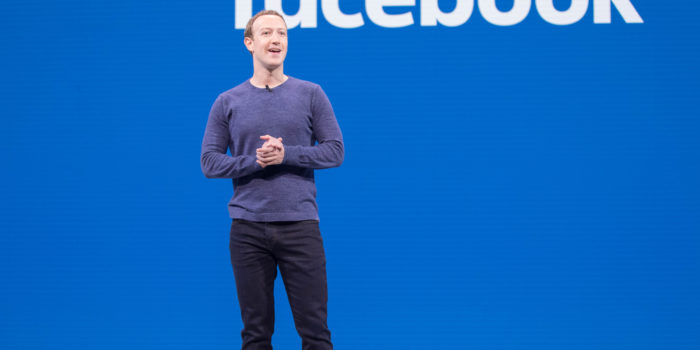Good Monday morning. It’s the First Monday in October when the Supreme Court opens for its term. Net neutrality protections are one contentious issue the Supreme Court won’t address this year after a DC appeals court sided with the FCC. The decision will allow states to create their own versions. Quartz has a good explainer although nothing is imminent.
Today’s Spotlight takes about 5 minutes to read. Want to chat about something you see here? Here is a contact form.
2. News To Know Now
1. Nevada’s privacy law took effect last week. Consumers living there can prevent companies from selling personally identifiable data. An opt-out form or email address is required, and companies have ninety days to acknowledge requests.
2. DCH, a three hospital system in Alabama, has paid to restore its systems after a ransomware attack, according to AL.com. Meanwhile Baltimore’s mayor has placed the city’s CIO on leave after ransomware crippled city service earlier this year according to StateScoop. Part of the cited rationale included inaction regarding a 2017 internal threat assessment identifying the attack’s risk and the presence of servers running outdated versions of Microsoft Windows.
3. Facebook CEO Mark Zuckerberg was recorded at employee meetings that lasted two hours. The Verge has received and published the recordings. Zuckerberg is heard discussing:
- Twitter’s inability to stop disinformation or harmful information.
- A potential legal battle if Senator Elizabeth Warren is elected president.
- Chinese-owned TikTok’s popularity in the U.S. and India, especially in India where it is more popular than Instagram.
- His control over the company’s voting rights alleviating the need for Facebook to supply quarterly-focused financial results.
- Thirty thousand content moderators who face having to view distressing text and video. Zuckerberg agreed the job has distasteful elements, but says that the media overdramatized the story.
- Transcripts are here.
Our friend Wilson Cochran is a standup family man and the father of a delightful 4-year-old girl named Charlie. Wilson recently announced that he is in kidney failure. If you have any notion of ever being tested to be a donor, please write George by pressing the reply key, and I will put you in touch with him.
Here is his story.
3. Government Data Mining, Part 4: What Happens Next
Our government data mining analysis covers four areas over four weeks.
1. Facial recognition’s growth – three weeks ago
2. Ancillary data from applications – two weeks ago
3. National and local algorithms to make sense of all the data – last week
4. Extensions into areas like personal health records and trackers – below
Ivanka Trump didn’t start the trend, but quickly tried linking gun violence prevention legislation the White House finds troubling to a new federal agency proposal called the Health Advanced Research Projects Agency, or HARPA. Proponents see the agency as a medical science equivalent of the military’s DARPA, which created the technology that evolved into the Internet.
The administration specifically wanted to know if this new agency could help identify people who were on the brink of becoming mass shooters. Washington Post reporting shows that their three page proposal included tracking data from fitness trackers, smart watches, and mobile phones used by mentally ill consumers, which presupposes that gun violence is linked to mental health, something that is in no way proven.
The HARPA example of analyzing Fitbit data is one extreme but real example of governments and law enforcement using technology in preemptive ways. Another extreme recent example is Wednesday’s news that the Department of Justice will authorize Homeland Security to collect DNA from all migrants who are detained rather than only those who are arrested. We’ve covered DNA databases before, but this is DNA involuntary seized when a non-American is detained. That DNA will also undoubtedly be used to identify American citizens, leading many to question the constitutionality of the federal government collecting the data.
In addition to physical tracking, government agencies are also increasingly interested in using semantic analysis to question the words people post to social media. This type of analysis has been around for years and is behind robust marketing concepts like search engine optimization and advertising, but government plans call for wholesale monitoring of all platforms.
Israeli startup Zencity expanded into the U.S. last year and already has deals in place with local governments in Chicago, San Francisco, and Houston to monitor social media and telephone calls to city services while classifying citizen sentiment. This is no longer about counting complaints, but using software to classify the severity of the feedback. Federal offices increasingly want this information too, and Attorney General William Barr co-signed a joint US-UK open letter Thursday that urges Facebook not to encrypt communications.
The French government also wants social media access according to The Guardian last Tuesday, but for tax purposes. The French Public Action and Accounts Minister said last year in an interview that “the tax office will be able to see that if you have numerous pictures of yourself with a luxury car while you don’t have the means to own one, then maybe your cousin or your girlfriend has lent it to you, or maybe not.”
China remains the foreign government most invested in social media. The country’s Social Credit System remains a hodgepodge of basic counting (think: number of complaints), business information, and traditional credit reporting (which some may argue is already creepy enough).
China’s vague plans were written about in breathless terms by Western media, especially in America, and have served as the backdrop or inspiration for more than one television show. Since then privacy advocates in the West agree that social credit scores could be very bad indeed, but no one understands how to codify those yet.
A fantastic explainer infographic by Visual Capitalist explains how social credit grew out of financial markets and has been used to stop people with unpaid taxes from leaving China or dog owners who don’t clean up after their dogs to potentially lose them. Both of those penalties sound fine. But there are warning signs too, including citizens being blocked from purchasing air or rail tickets or being eligible for a job.
The Bottom Line: Nothing summarizes the dynamic nature of governments using consumer technology to govern better than what happened as we wrote this series. We developed the idea to write about government data mining at the end of this summer and began the series in September. Since then we have had opportunities to include multiple new stories each week.
What was written about China’s systems in 2015 and 2016 are inaccurate now. Either a new administration or a Trump reelection in 2020 will create additional programs.
And there are ever-increasing numbers of private programs such as the DRN vehicle location database created entirely by companies that repossess vehicles. They’re tracking locations of all vehicles, not only the ones they’re interested in pursuing. They’re likely tracking your car too, which begs an answer to the oft-asked: whose data is it anyway?
4. Google Search Updates
Google, which drove most of the Internet’s adoption of HTTPS encrypted security, is planning to use its market leading Chrome browser to ensure the encryption standard is appropriately applied. Small areas of non-encryption, often caused by non-technical staff or lack of resources, create pages with “mixed content” with only some parts of the page secure.
Google Chrome will automatically block people from visiting those pages beginning in December. After years of offering a carrot with improved ranking and then requiring encryption, Google is now using a stick by blocking users.
There are also reports that Google is testing a sidebar similar to Amazon’s in search results. You may remember that Google showed ads down a page’s right sidebar until about a year ago.
Google also announced last week that its revamped Shopping experience is now showing across desktop and mobile in the U.S. These pages are personalized now much like your search experience although one neat feature is the ability to create price tracking, which isn’t out yet but will be soon because Christmas is 79 days away.
Sorry for that reminder.
5. Debugged: Disinformation Campaigns for Sale on the Dark Web
It was a little surprising to learn from a ZDNet story that disinformation campaigns are for sale on the dark web. We’ve shown you some of the illegal things you can purchase there,.It was news to us to learn you could also buy media campaigns.
Read: For a few hundred dollars…
6. Also in the Spotlight
Amazon launched Amazon Cares, a virtual medical clinic for employees with an option for nurses to visit an employee’s home, reports CNBC.
The majority of those recommend ad sections at the bottom of seemingly every news article online are served by ad companies Taboola and Outbrain. Now Taboola is buying Outbrain in an $850 million deal according to TechCrunch.
Facebook will not factcheck advertising, the company announced. Despite the horror this created for pundits, there are still truth in advertising laws protecting consumers. No one wanted people to use age, gender, or race to exclude people from seeing Facebook ads, but it was the advertisers who broke the law by doing it.
7. Great Data: Bias in Polling Time Waits
There are times when huge data sets help us learn and not govern. Then-Harvard doctoral candidate Stephen Scott Pettigrew wrote his dissertation showing precincts with larger percentages of minority voters experienced longer delays during the 2016 election. That’s a problem because longer delays mean lower voter turnout. Pettigrew’s analysis uses data from Massachusetts and Florida to show that minority precincts are underserved by local election officials.
You can check it yourself here. It’s all there, every page.
8. Protip: Misconduct Reporting Database
This important resource by nonprofit I’m Them focuses on how people who are subject to workplace harassment can get assistance and file complaints in many of America’s largest organizations. The directory includes the organization’s rules, email addresses, and phone numbers.
Circulate this URL far and wide.
9. Bizarre Bazaar (strange stuff for sale online)
Monthly deliveries of “gourmet” peanut butter and jelly shouldn’t cost nearly $500 for the year. I’ve checked the Amazon product description. NOWHERE does it read that Beyonce will feed me bite-sized morsels of sandwich so I’ll pass but someone should tell the American Peanut Council about this.
10. Coffee Break: Subway Soprano
Emily Zamourka was singing Puccini in the Los Angeles subway on Monday night when the LAPD posted some of her remarkable singing to Twitter. The Internet responded like it sometimes can, and now Emily has been offered a recording contact along with tens of thousands of dollars in crowdsourced funds.
Catch up on the feel-good story here.
Top image: Anthony Quintano from Honolulu, HI, United States – Mark Zuckerberg F8 2018 Keynote, CC BY 2.0, Link

